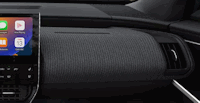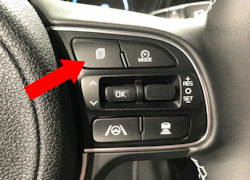Radiant heating A recent piece from InsideEVs began by stating that the updated Subaru Solterra does not have a glove box. The reason for this was that the space was needed for a radiant heating device, which is supposed to use less energy than either a heat pump or resistance heating. This seemed odd a …
Category: Articles & Commentaries
Discussions on topics of interest to drivers concerning things they may not understand about their vehicles as well as articles on the future of the auto industry.
Permanent link to this article: https://dashboardsymbols.com/2025/09/cadillac-takes-drive-modes-simply-too-far/
Permanent link to this article: https://dashboardsymbols.com/2025/09/subaru-sacrifices-a-glove-box-for-radiant-heating/
We should have known — the automaker lied
The automaker lied Early in August (2025), we put together a post that was essentially about who is liable if a self-driving car is involved in an accident. At the core of the piece was a very expensive settlement against Tesla. Now it turns out that the automaker lied about not having data from the …
Permanent link to this article: https://dashboardsymbols.com/2025/09/we-should-have-known-the-automaker-lied/
Another owner’s manual rant, this time at Kia
Owner’s manual rant We spend a great deal of time in automotive manuals and find fault all too often. So this is another owner’s manual rant, this time at Kia regarding my 2022 Niro EV. The car has been throwing a service interval reminder which was non-sense given the miles I’m not putting on the …
Permanent link to this article: https://dashboardsymbols.com/2025/08/another-owners-manual-rant-this-time-at-kia/
EV driving life is an app driving life, Part II
EV Driving About two years ago, I did a piece that suggested that an EV driving life is an app driving life. At that time, this was true in nearly all cases. I am about to take an extended trip that will require the use of on-the-road Level 3 charging stations and have been thinking …
Permanent link to this article: https://dashboardsymbols.com/2025/08/ev-driving-life-is-an-app-driving-life-part-ii/
Three reasons why you need a roadside assistance package
Roadside assistance I recently re-upped my contract with my roadside assistance provider. A change in banks blocked an automatic payment so I had to pay more attention to matter. And it got me thinking — there are three very good reasons why every driver today needs a roadside assistance provider. 12-volt Battery The first is …
Permanent link to this article: https://dashboardsymbols.com/2025/08/three-reasons-why-you-need-a-roadside-assistance-package/
New EV jump start video dropped on our YouTube Channel
Jump start video We just added a new jump start video to our YouTube channel with help for Chevrolet EV drivers with dead start batteries. These and all electric vehicles (EVs) use a 12-volt battery to actually start the car, much like a 12-volt battery is used to start an internal combustion engine vehicle. And …
Permanent link to this article: https://dashboardsymbols.com/2025/08/new-jump-start-video-dropped-on-our-youtube-channel/



Cadillac takes drive modes simply too far
Drive modes While continuing the update of Cadillac symbols, we found ourselves adding two new drive modes. In fact we added two new snow and ice mode symbols in use in different models at the same time! In examining this, we came across a table in the CT4 owner’s manual that shows all of the …
Continue reading